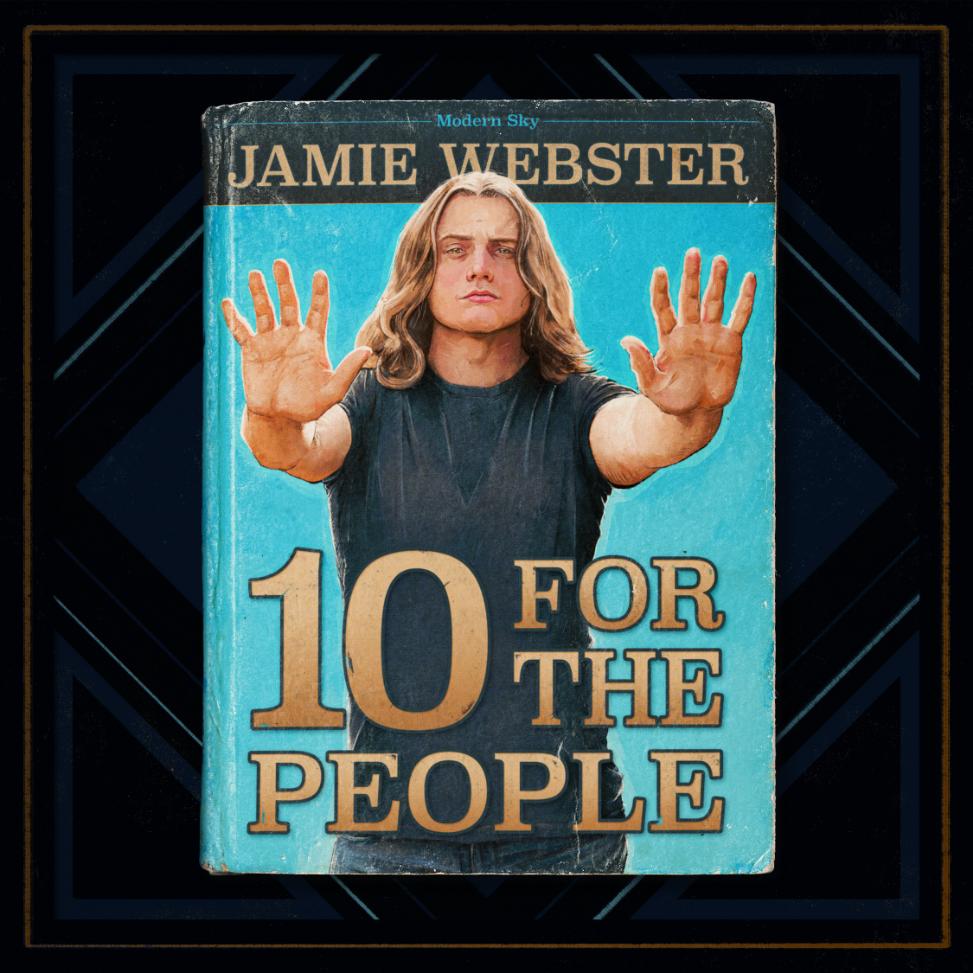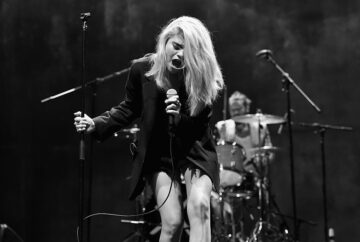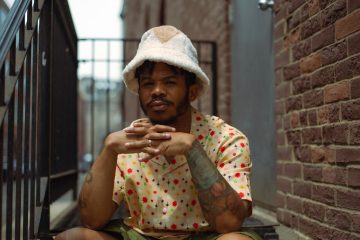With an acoustic slung over their shoulder and a down/up strumming pattern so devout it could induce RSI, the last decade has seen the emergence of a breed of singer-songwriter enamoured with the 4/4-time signature and a bass drum’s thump. It’s a sound that smacks of open mic nights and inebriated crowds, as though their careers remain rooted on a pub stool.
The inexplicable rise of Scottish troubadour Gerry Cinnamon might be to blame. After all, in his wake, the Billy Bragg-endorsed (more on that in mo) Liverpudlian electrician-turned-folk-singer Jamie Webster has arrived. But whereas Cinnamon’s stompers are sandpaper coarse, rough enough to inflict instant cluster headaches (the sort of sledgehammer pummel that could have worked wonders for intelligence agencies in Guantanamo), Webster’s writing has greater nuance; musically as deft as the lyrics are defiant.
Following the top-ten chart placings of We Get By and Moments, he returns with his third album, 10 For the People. It’s quite wonderful. And yet, things don’t start promisingly. ‘Better Day’ is a kitchen sink drama that’s had the kitchen sink tossed recklessly at it. A tale of unions, picket lines and blue-collar altruism, it’s the sort of overcooked, cloying pop number you’d expect to stumble across on an eighties re-run of Top of the Pops. Lyrics such as “I’ll stand up for the people because everybody’s equal” may make it noble, its bombast is almost enough to turn you into a scab.
READ MORE: Summer 2024’s UK Music Festivals | A Complete Guide from Country 2 Country to Glastonbury
Things radically improve by what follows. ‘Voice of the Voiceless’ may be ripe for festival recap montages of sun-soaked crowds, drug-addled and in bucket hats, but it’s an irresistible slice of radio pop. Billy Bragg’s warm, gruff timbre adorns the catchy electric guitar chop of ‘Fickle Fran’, while the two-song saga ‘The Boy (Chapter One)’ and ‘The Girl (Chapter Two)’ is so rich of atmosphere and abundant of hook that it’s an incontestable career high, voyaging into exciting, new terrain.

Elsewhere, ‘Sing Your Tears’ summons Mumford and Sons so shamelessly that were it a Masked Singer contestant, profanities would be spluttered at the absence of Marcus Mumford upon reveal. Similarly, ‘Looking Good’ is Sunny Side Up-era Paolo Nutini, and ‘Dolly Bird’ has a trumpet break that recalls Belle and Sebastian’s ‘Judy and the Dream of Horses’. These references are complimentary to a work that, for all its nods to other artists, is still resolutely Webster. His personality bursts through each time, no matter what hat he wears.
READ MORE: An interview down the pub with Louis Dunford
Speaking of which, album closer, ‘How Do You Sleep At Night?’ evokes Dylan at his mid-sixties protest best. A show-stopping cri de cœur, it laments greed, the abuse of power and corrupt foreign policy (“With guns from South Dakota/And trucks made by Toyota/One wonders how such things possess their hand?”). It’s so timely to overseas conflicts that the words might as well be the ticker tape on a (likely, non-MSM) news channel.
10 For the People is a work that sees Webster break away from the pack. This working-class wordsmith champions the underdog, but his music crosses the class divide. For old romantics who believe in music’s power to move the dial and effect positive societal change, no matter how small, that’s a potent pill. For everyone else, there’s always the tunes – and a subconscious education. For the people, indeed.
Photo credit: John Johnson
Keep up to date with the best in UK music by following us on Instagram: @whynowworld and on Twitter/X: @whynowworld





